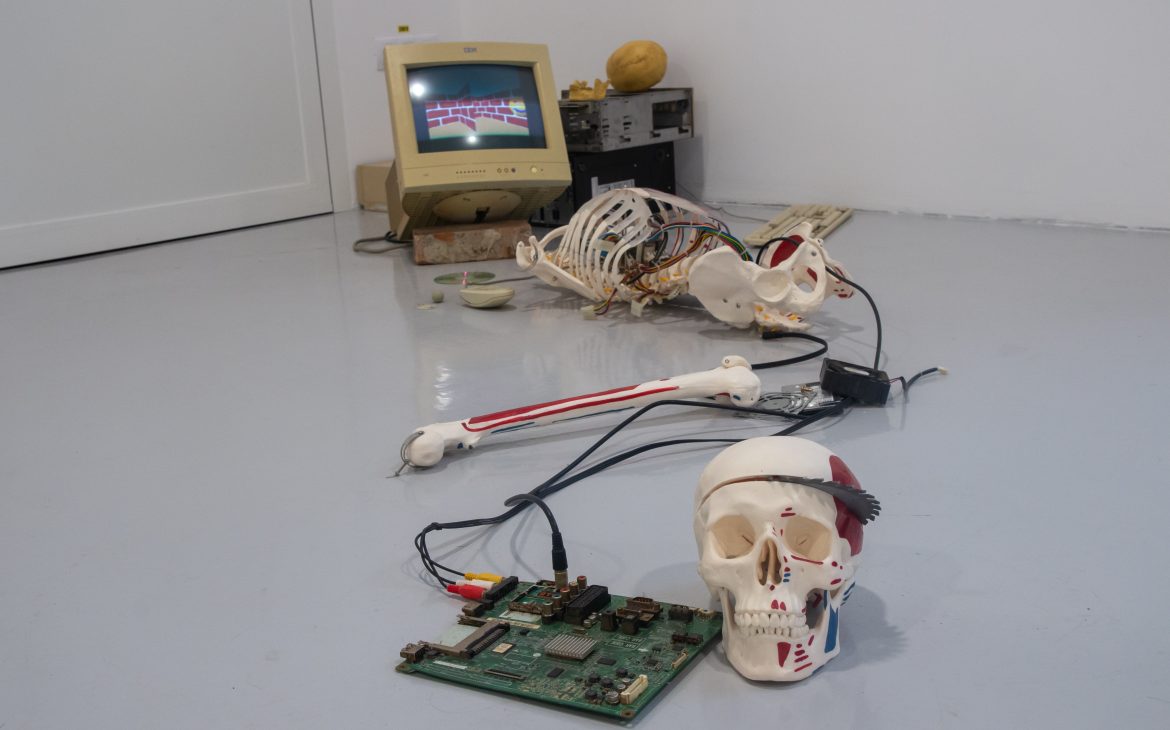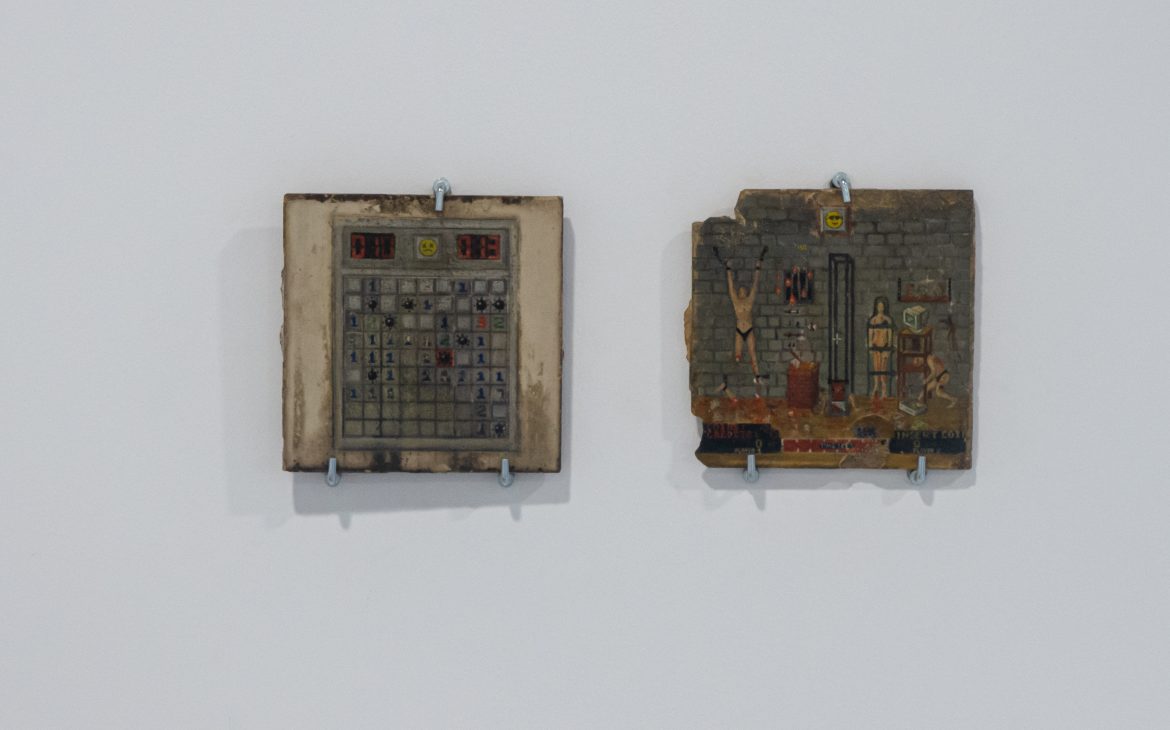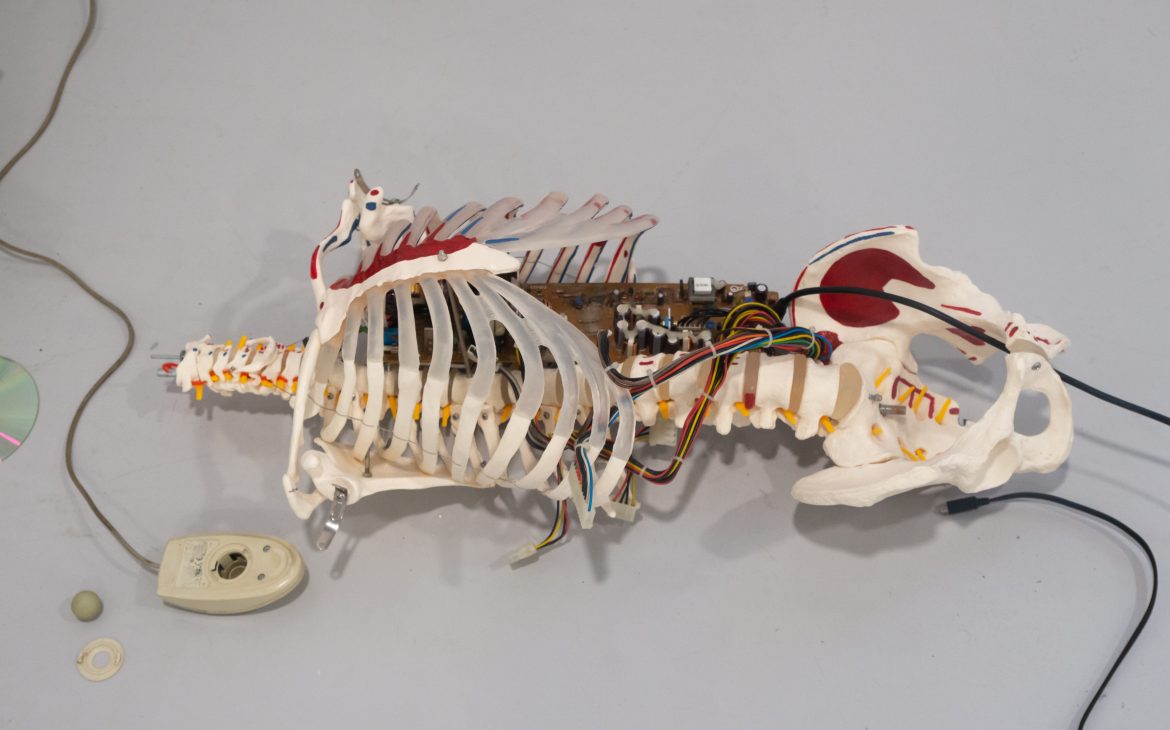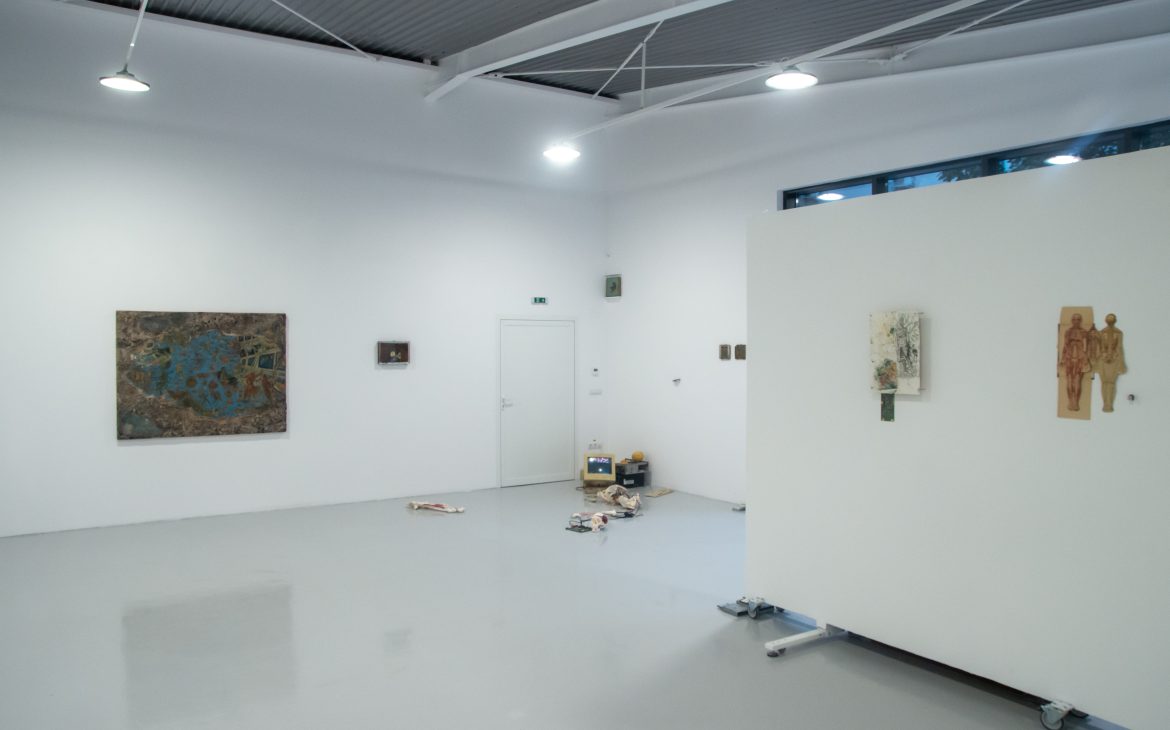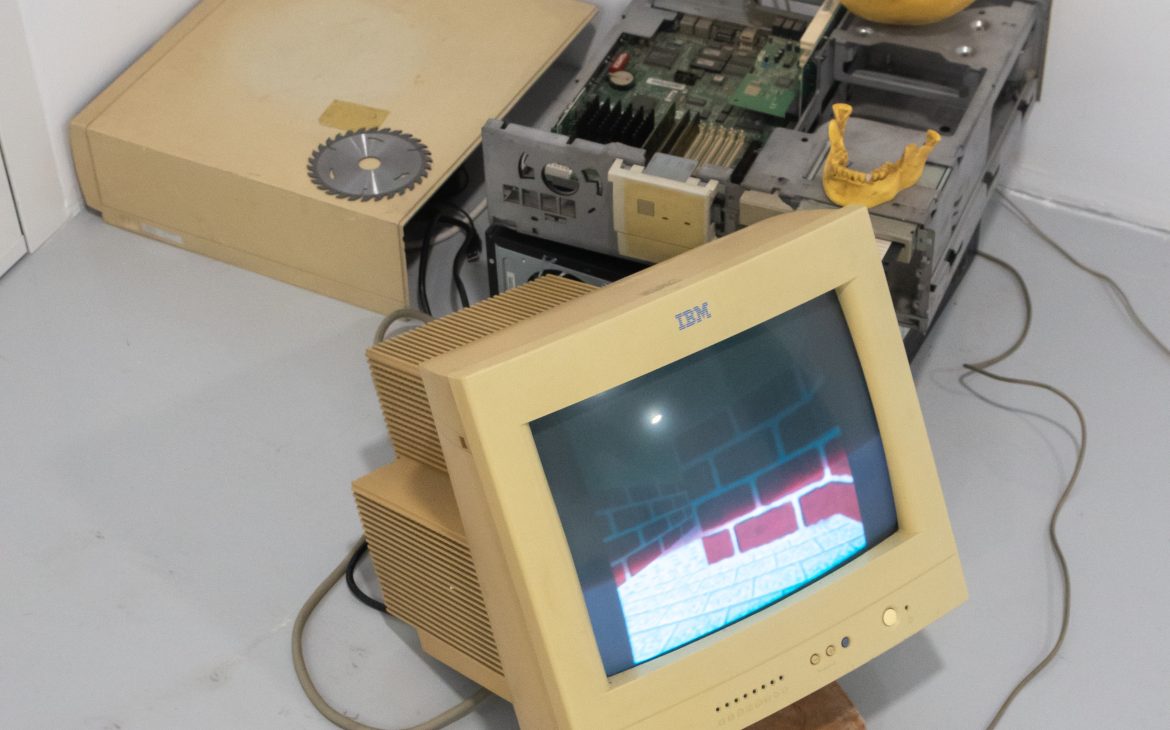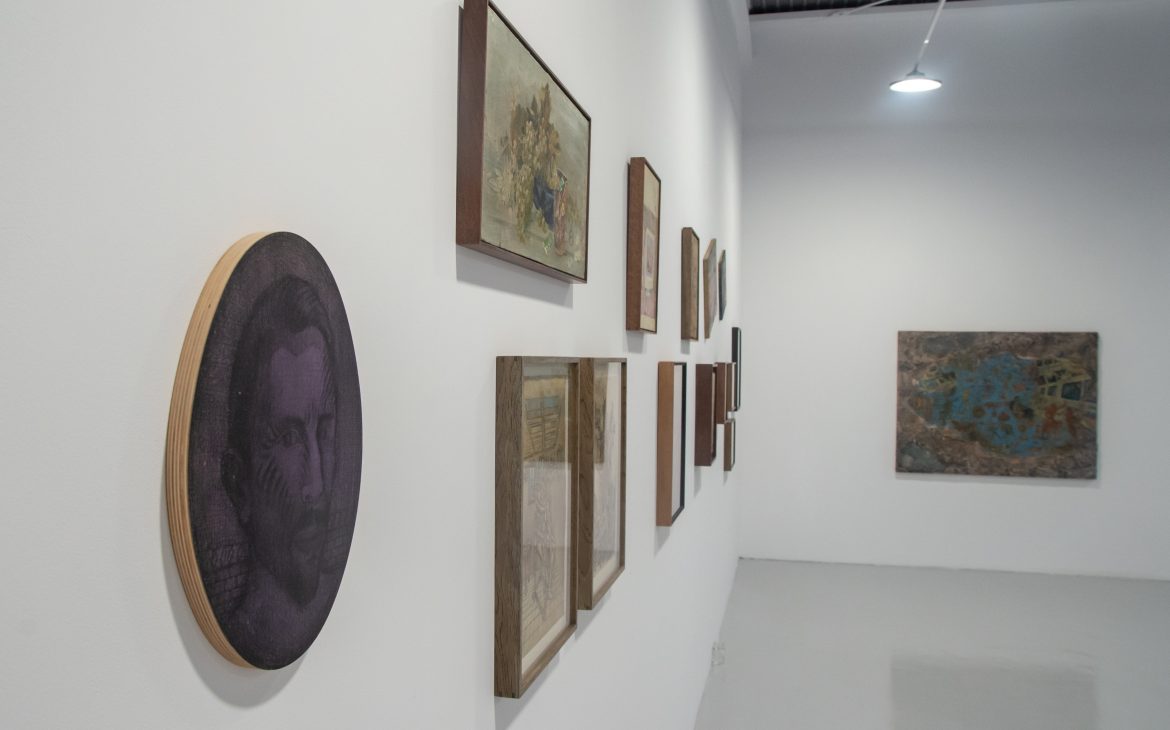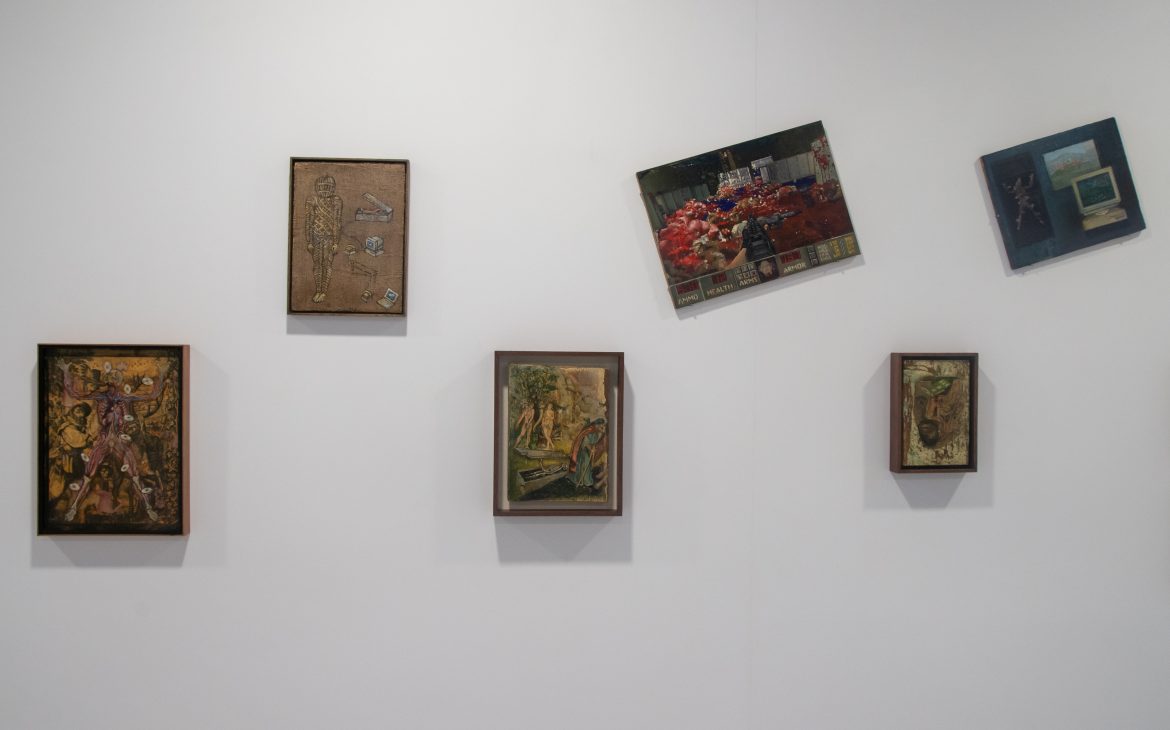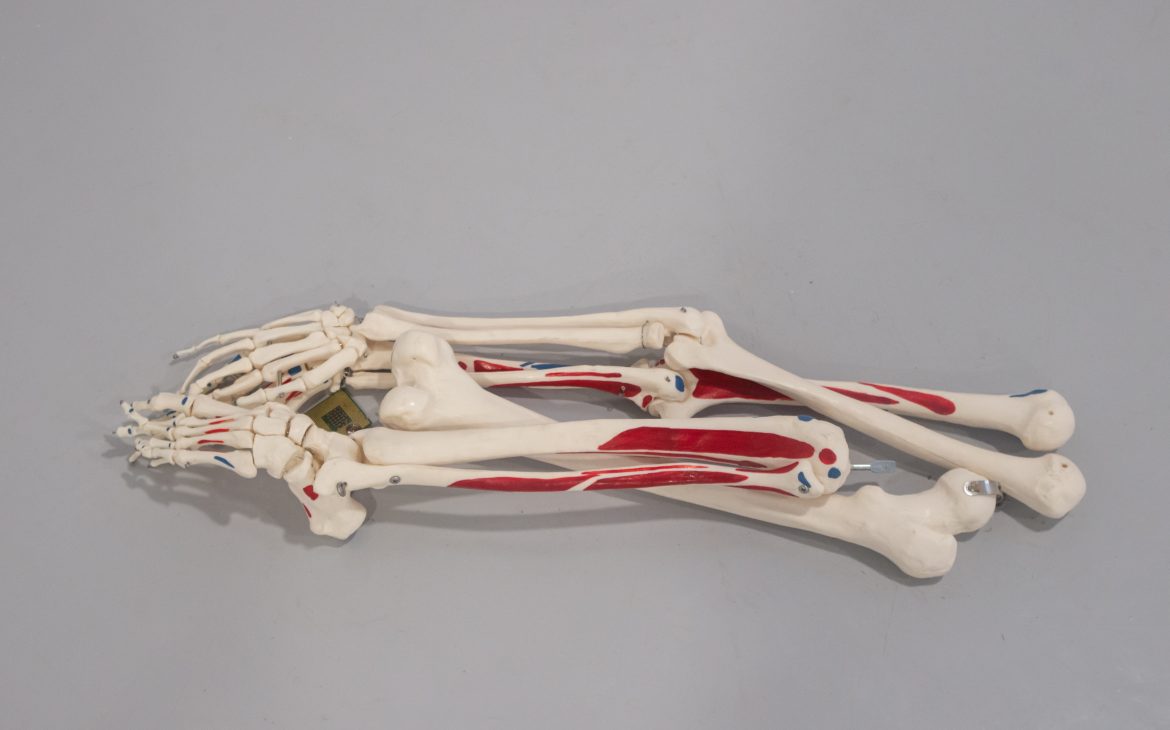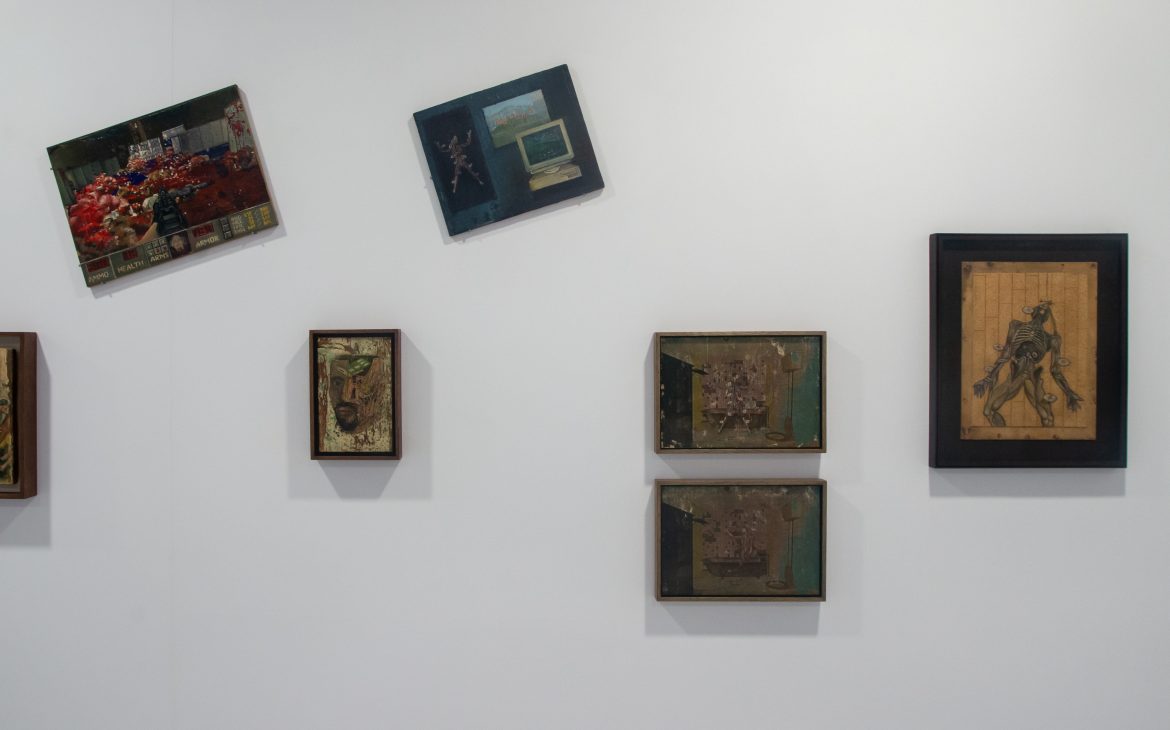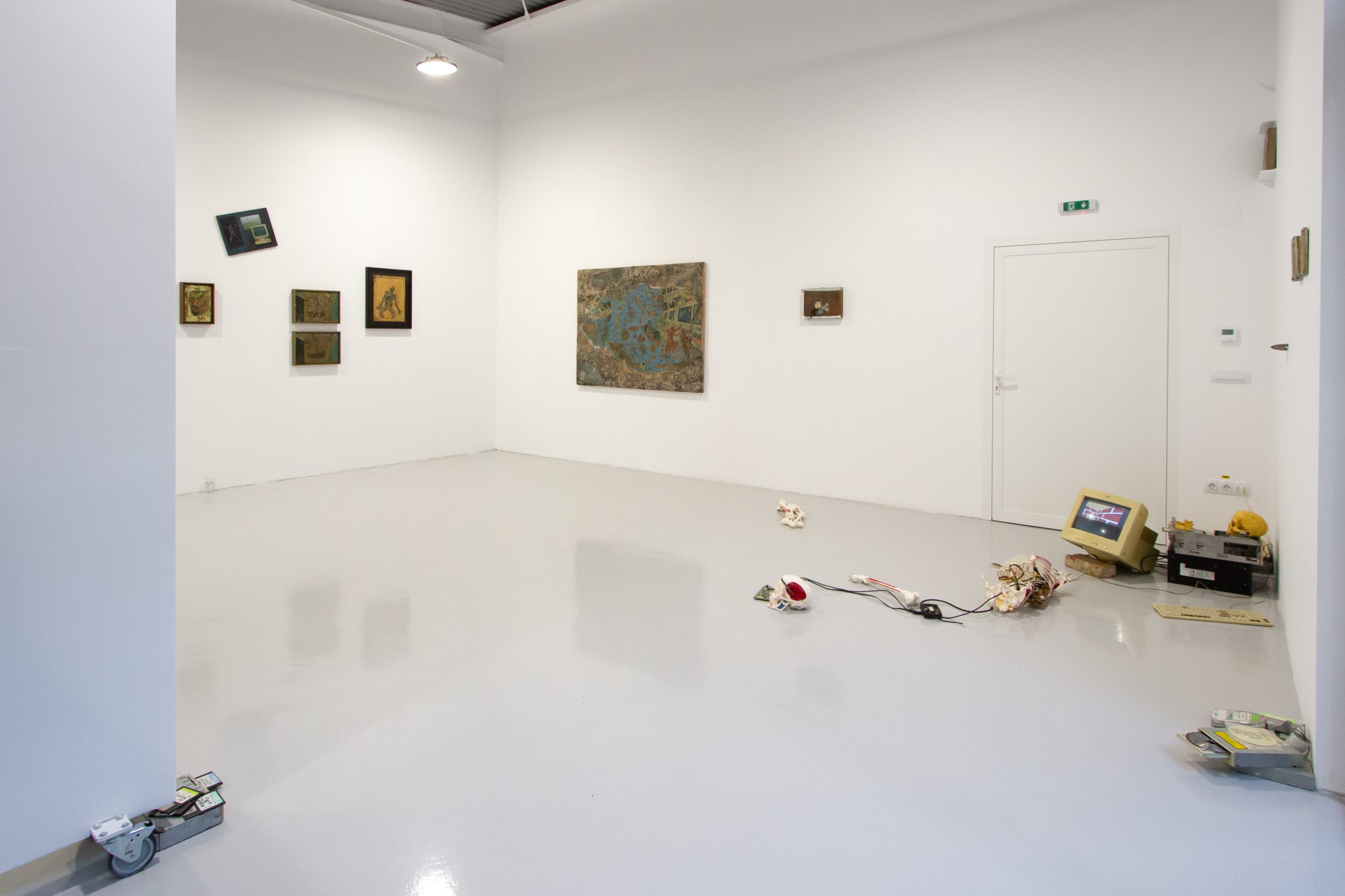Curated by Horațiu Lipot, the painting exhibition of Cluj-based artist Nicolae Romanițan, entitled “Dezvrăjit” (Bewitched) can be visited until November 1, 2023 at Borderline Art Space.
“In the artistic center of Cluj, with its specificity of the painting medium, one paints more than often, beautifully. Realistic, photo or hyper realistic, and if we talk about abstract compositions, analytical ones predominate, in blocks of color that seek the perfect temperature between colors. It is painted on well-defined and prepared parietal supports, the predominant canvas, as in traditional artistic centers, is mostly linen. As there is already a well-formed system of the primary market, the works, even among the very young generation, are often framed.
An equally important part of the same well-defined system, of the constant cultural export to the West, from the last almost 20 years, is that most of the artists assimilated into the circuit, be it institutional or market, hold doctorates, and regardless of the environment they most practice is supported in the genre of painting. So in Cluj they paint and they paint in general, academically, beautifully.
But not Nicolae Romanițan whose works, often on precarious supports, found or recovered, are defined primarily by a striking authenticity, by the nostalgia of a tactility and pregnant materiality, precisely as a response to their expected obsolescence in an increasingly inevitable world accelerated towards the complete immaterial, Boolean and dry, from language articulated on 1’s and 0’s like a bad dream of binary opposition. I preferred to use beautiful instead of aesthetic, because it is not always authentic, or real, as for the ancient Greeks, kallos also had the meaning of useful. We are talking ironically of that beauty that increasingly defines the state of the world-packaging typical of today’s open capital markets, where the most visually present type image is that of advertising, or of personal identity transformed through commercial filters.
Many of the subjects, materials chosen, and sometimes even the techniques used by Nicolae Romanițan – such as the hatched drawing in pen – are so specific to the generation categorically called millennials or Y. The artefacts and the iconographic arsenal are from the archaic-digital category, like stop-frames from SEGA games, motherboards exposed like a digital incarnation, CDs and CD-ROMs that today’s speculative statistics tell us today’s generations don’t even know exactly what they look like, nineties computers with bulky, horizontal cases unfurled by a plumber on the floor with the circuits exposed, as if the artist is ready to teach an anatomy lesson, digital of course. Often used as a support for these techno-apocalyptic iterations are at the polar opposite domestic-warm artifacts that defined the structural shell on which these proto-digital, first-of-the-90s free-market fantasies unfolded: cheap white tile, linoleum , pieces of furniture or salvaged plaster, or paintings of still lifes with plasticized fruits that decorated the dark hallways of the socialist blocks.
Often Nicolae Romanițan’s scenes seem stylistically a neat fusion of graphic design and painting. The effective depiction of a post-apocalyptic technological singularity is fueled by a composite spatial-pictorial-emotional effect that breaks down the divisions between what you feel, what you see, and what seems like a dream. Arranged in the picture plane with the dense materiality of things hastily stuffed into a backpack, ready to go, the objects in his scenes collapse ubiquitously into the inner architectural and psychological space.
In the bodies of the characters represented more and more as alone-in-the-world, having the allure of a self-portrait often masked in scenes of history or art history, rolled with the technology operated not at all symbiotically in the body, through its hardware part of the painful implants and not the software part of the programmable ones and amnesiacs, we see moments of agony, loneliness, defeat, but also tenderness and ecstasy, expressed in a self-taught, manically detailed style, approaching the caricature part of the species of realism, which is more specific to American than European modernism; of course, the major influence of the mentioned generation.
These works clearly testify to the beauty of a world that is about to collapse, in an accelerated course of disenchantment, as if an individual of the year 2050, after taking off his VR headset, notices that in the few years of virtual reality he continues in utopian places, around him the real things, began to collapse, to fail. A state of grace of the late Anthropocene, at the objective limit of chaos, about which another Cluj resident, Ovio Olaru, writes in the volume “Pilotul” (The Pilote):
[…] “We are in a state of a lot, proof that we are slowing downthe rotation of the planet
with our constructions
and we have bones as strong as granite
which we break without risk
in machines accidents
we do not sound perishable, because we have passed the animal stage
and we fix ourselves artificially” […]”
Horațiu Lipot, curator
Nicolae Romanițan (b.1991) is a multidisciplinary artist who explores different realities such as video games, animated series/films, magazines, medieval manuscripts and other forgotten media, looking for a correspondence with the events of recent history or simply to highlight the material world of symbols with a strong iconicity or artifacts as tactile as possible. It is also in a continuous search for the links of art history with possible alternative realities. It manages to reveal deep meanings, at times focusing on the darker aspects of life, such as alienation, posthumanity, eroticism, pain, violence, the absurdity of war, all seen in a deeply existential way, infused with relentless irony. In his studio practice, he paints and draws, but also approaches digital art or photography in specific projects. His main interest lately has been to develop and depict themes that address the concept of the “after-life” and focus on the demon slayer motif and different ways of seeing life and death, in different techniques, especially painting in oil on different supports.
